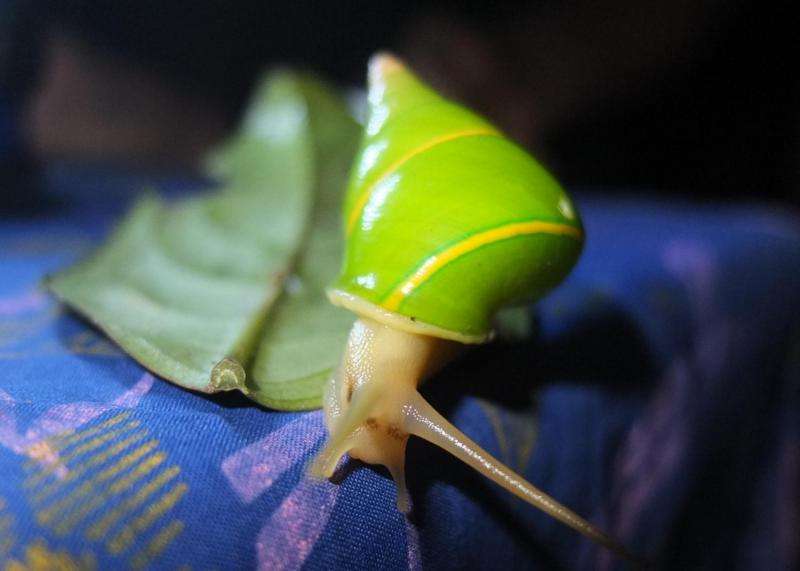Saving the unloved, one crowd at a time

A newly released study from WCS (Wildlife Conservation Society) offers hope of conservation to the world's low-profile and more unloved members of the animal kingdom. The study, which appears in the international conservation journal, Oryx, demonstrates that a "Wisdom of Crowds" method can successfully be used to determine the conservation status of species when more expensive standard field methods are not feasible.
"Conservation funds are going to high-profile species," said WCS biologist and author of the study, Nathan Whitmore. "But for most of the 9 million species on Earth, we have no idea if they are in trouble or the resources to conduct field surveys. In a competition for funds, tigers beat snails, even pretty ones, every time."
WCS assessed the conservation status of the Manus green tree snail—a species found only on Manus Island in Papua New Guinea— using the century-old Wisdom of Crowds method. In this approach, knowledge collected from a large number of people is used to generate estimates.
Four hundred people at the island's main market were surveyed and asked to map the relative abundance of the snail based on personal observations. After analyzing the resulting data, WCS was able to generate a detailed profile that included data on the snail's range, likely environmental factors affecting its distribution, and its rate of decline.
Using this information, a petition was submitted to IUCN and the Manus green tree snail was given the globally recognized classification of "Near Threatened" in the 2015 IUCN Red List update.
The study notes that success of the Wisdom of Crowds method hinges on participants holding knowledge which has been gained locally and independently. For example, the people of Manus live a subsistence life in and around forests and in effect, they are sampling nature on a daily basis.
While Whitmore does not advocate using Wisdom of Crowds instead of quantitative field monitoring, he believes the method is sufficient for basic conservation decision making, such as determining a species' threat status or triage assessment when funds for field survey are unavailable.
Whitmore elaborates: "Understandably, people want to see calibration of this technique with a field survey. But it's a dilemma—we used Wisdom of the Crowd because there isn't much money for projects on snails, but to do a comparison between field survey and Wisdom of Crowds would require money for both. While some wildlife managers may be able to access such funds for sexy charismatic animals, for the drabber and more unloved members of the animal kingdom, the choice will be between a rough low cost assessment technique like Wisdom of Crowds or nothing at all."
Journal information: Oryx
Provided by Wildlife Conservation Society




















